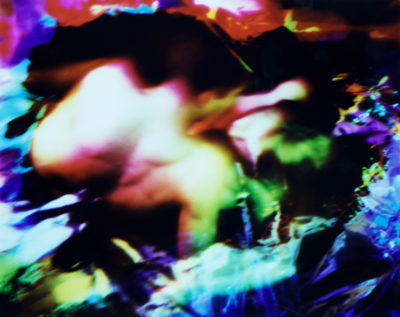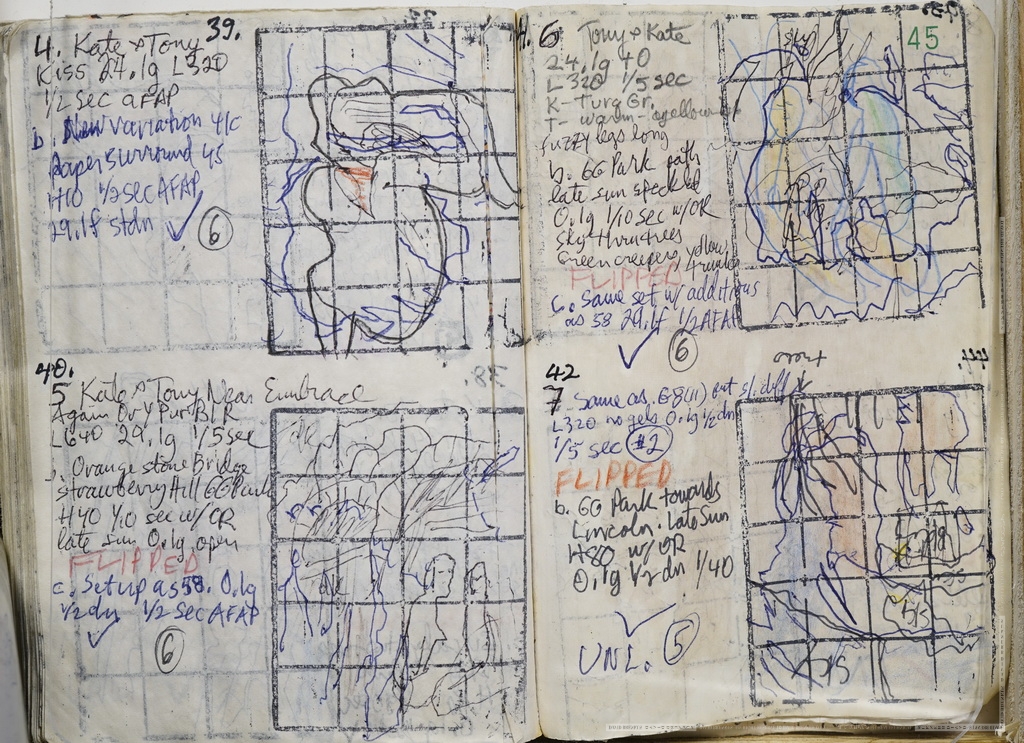MORE ABOUT MULTI EXPOSURE MYLAR

The Lover’s Observed 1997
This group of 4×5 color photos was taken more or less at the same time as the previous one, but instead of layering outdoor environments upon the nudes I’d shot, I continued to use and experiment with Mylar and exposed that instead. Sometimes I combined both as I was moving in all directions at the same time, but the category is useful for me because the overall look and feel is different. One of my favorite shots became The Lover’s Observed. I began working with couples, in this case Kate and Tony who kindly agreed to model. I was surprised at the result, which was what I always hoped for.
Here is my shot book page that includes my notes for that picture in the top left corner. As you can see in this case I began with the models but often it was the opposite: I made Mylar exposures and later exposed the models, who I shot against and upon a black cloth background. In my notes I often used color pencil to remind myself of the dominant colors in the photo, but sometimes I didn’t have the time to do so or it was just too difficult as when the wind was blowing outdoors.

Shot_Book_9_132 (1997)
I liked the freedom to shape the Mylar exposure separately. When I had models lie down on Mylar and was only making a single exposure, my primary concern in focusing and deforming the image was the person, so whatever happened to the Mylar part of the image just happened. With these photos I began to peer into the Mylar as if it was a separate world because I could concentrate on it alone. I began to invent stories for myself from the shapes I was seeing and decided to capture.
These experiments were important to me, not only because I liked what came out , but because certain ones convinced me that it is indeed possible to paint with an analog photograph. The Mylar exposures provided something I could shape and use to add ideas, as well as the color that you would expect to be able to control with a painting. Of course, it is not the same. With a photograph you always come back to the light you capture in a particular moment, or group of them.


